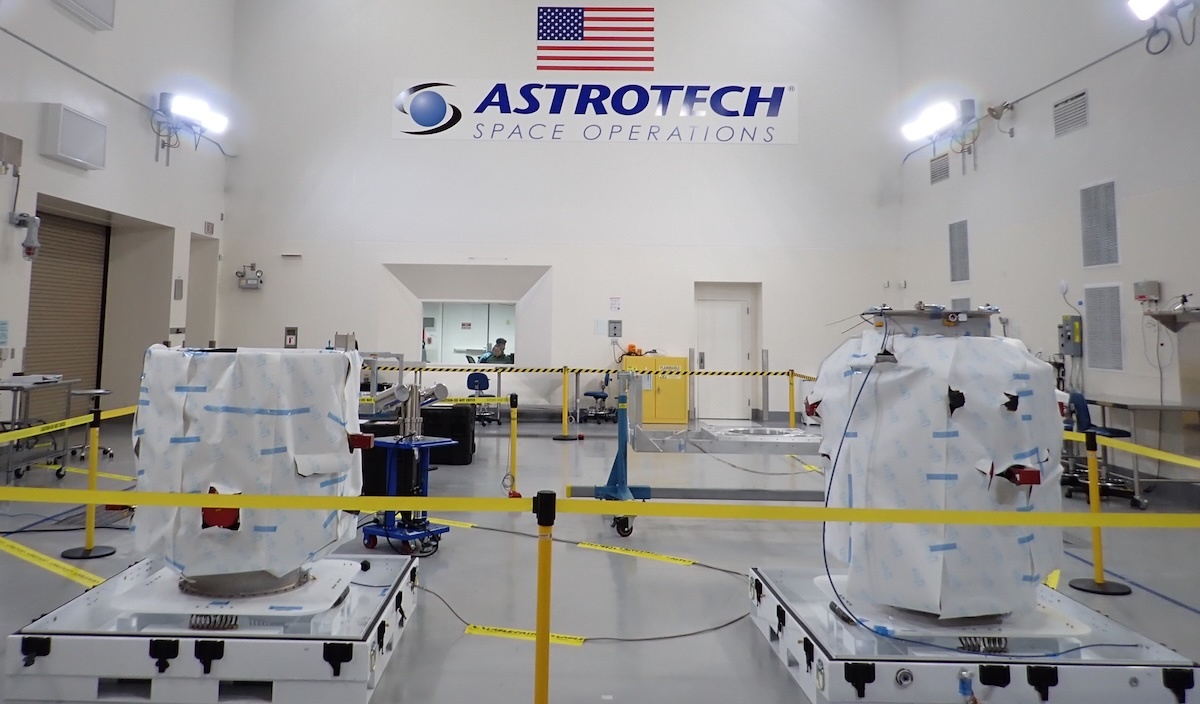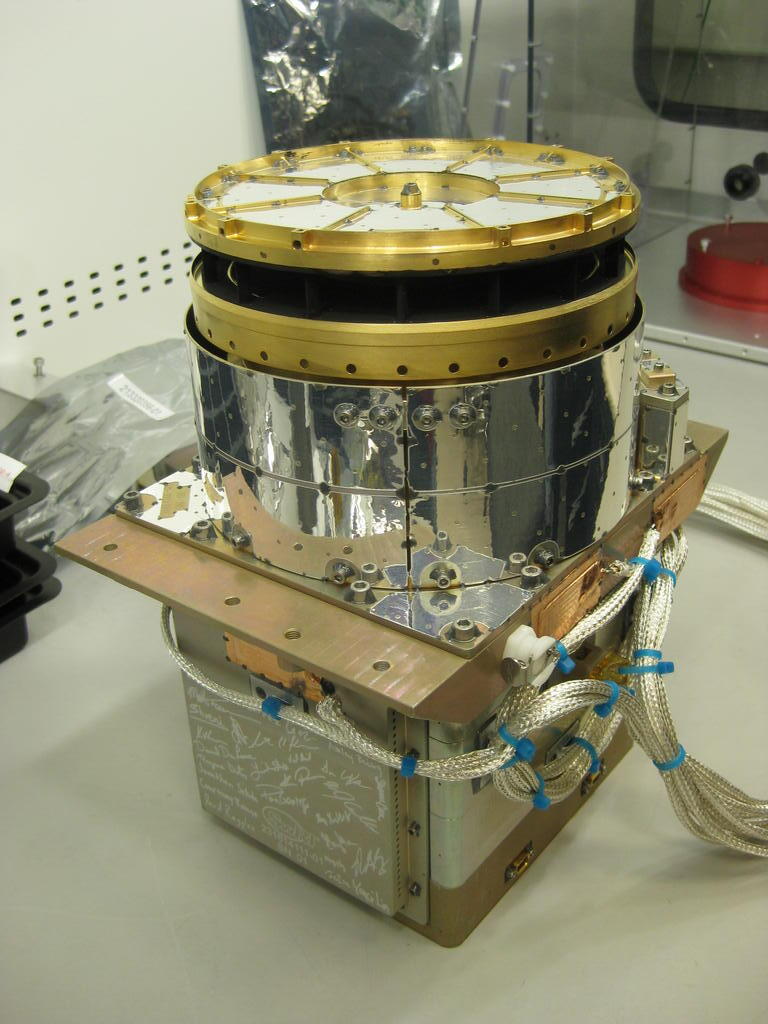20.07.2025
NASA’s TRACERS Mission Targeting Launch on July 22

NASA’s TRACERS (Tandem Reconnection and Cusp Electrodynamics Reconnaissance Satellites) spacecraft are targeting launch aboard a SpaceX Falcon 9 rocket during a launch window that opens at 2:13 p.m. EDT (11:13 a.m. PDT) on Tuesday, July 22. The TRACERS mission and three NASA small satellites will launch from Space Launch Complex 4 East at Vandenberg Space Force Base in California.
The TRACERS mission will study how the solar wind, the continuous stream of ionized particles escaping the Sun and pouring out into space, interacts with Earth’s magnetosphere, the region around Earth dominated by our planet’s magnetic field. Understanding this region and space weather patterns is paramount in our increasingly technologically driven society, as space weather events can affect our power grids and communications satellites, and create potentially hazardous conditions for astronauts.
Also launching on this flight are three additional NASA-funded payloads. The Athena EPIC (Economical Payload Integration Cost) SmallSat, led by NASA’s Langley Research Center in Hampton, Virginia, is designed to demonstrate an innovative, configurable way to put remote-sensing instruments into orbit faster and more affordably. The Polylingual Experimental Terminal (PExT) technology demonstration, managed by the agency’s SCaN (Space Communications and Navigation) Program, will showcase new technology that empowers missions to roam between communications networks in space, like cell phones roam between providers on Earth.
Finally, the Relativistic Electron Atmospheric Loss (REAL) CubeSat, led by Dartmouth College in Hanover, New Hampshire, will use space as a laboratory to understand how high-energy particles within the bands of radiation that surround Earth are naturally scattered into the atmosphere, aiding the development of methods for removing these damaging particles to better protect satellites and the critical ground systems they support. The REAL mission is the first CubeSat to launch for the state of New Hampshire as part of NASA’s CubeSat Launch Initiative, which provides low-cost access to space for U.S. educational institutions, informal educational institutions such as museums and science centers, non-profits with educational and outreach components, as well as NASA centers for early career workforce development. With REAL, 39 U.S. states, the District of Columbia, and Puerto Rico will have launched as part of the initiative.
The TRACERS mission is led and managed by David Miles at the University of Iowa with support from the Southwest Research Institute in San Antonio, Texas. NASA’s Heliophysics Explorers Program Office at the agency’s Goddard Space Flight Center in Greenbelt, Maryland, manages the mission for the agency’s Heliophysics Division at NASA Headquarters in Washington. The University of Iowa, Southwest Research Institute, University of California, Los Angeles, and the University of California, Berkeley, all lead instruments on TRACERS that study changes in the magnetic field and electric field. NASA’s Launch Services Program, based at the agency’s Kennedy Space Center in Florida, manages the agency’s VADR(Venture-class Acquisition of Dedicated and Rideshare) contract.
Quelle: NASA
----
Update: 23.07.2025
.
TRACERS mission prepares for launch

NASA’s Tandem Reconnection and Cusp Electrodynamics Reconnaissance Satellites (TRACERS) mission, a collaborative effort led by the University of Iowa (UI) with substantial contributions from Southwest Research Institute (SwRI), has entered its final integration phase. NASA is set to launch TRACERS’ two satellites into low Earth orbit on July 22, 2025, from Vandenberg Space Force Base in California. The TRACERS mission will explore the dynamic interactions between the Sun’s and Earth’s magnetic fields.
SwRI is providing comprehensive mission management and science to UI and developed the Analyzer for Cusp Ions (ACI) instruments, which study how the magnetic fields of the Sun and the Earth interact by making novel measurements in the north polar cusp. In addition to managing the development of the two satellite bus platforms provided by Millennium Space Systems and supporting instrument integration and testing, SwRI will support science operations post launch.
“TRACERS has two identical satellites outfitted with five instruments, each to collect data from over 3,000 cusp crossings during its one-year primary mission,” said SwRI’s Mark Phillips, deputy project manager for TRACERS. “By observing from two points along the orbit, the mission offers a multidimensional view of these reconnection events, providing crucial insights into how solar wind conditions impact the magnetosphere. This information is vital to understanding space weather phenomena that can disrupt satellite operations, communications and power grids on Earth.”
The spacecraft will observe particles and fields in the Earth’s northern magnetic cusp region, which encircles the North Pole where our planet’s magnetic field lines curve down toward Earth. This unique vantage point allows researchers to study how magnetic reconnection — when field lines connect and explosively reconfigure — affects the space environment.
“TRACERS is an exciting mission,” added SwRI’s Dr. Stephen Fuselier, the mission’s deputy principal investigator and lead of the ACI instruments. “We flew NASA’s TRICE-2 rockets in 2018 as a part of the international, multimission ‘Grand Challenge Initiative – Cusp observational campaign. The data from that single pass through the cusp were amazing. We can’t wait to get the data from thousands of cusp passes.”
TRACERS will provide important context for data from the SwRI-led Magnetospheric Multiscale (MMS) mission, launched in 2015. MMS characterized magnetic reconnection in the Earth’s magnetosphere on the microscale for the first time. Magnetic reconnection is responsible for explosive solar events, such as solar flares and coronal mass ejections, which drive disturbances in Earth’s space environment. Such disturbances produce spectacular auroras, while the high-energy electromagnetic radiation they send toward Earth can shut down electrical power grids and disrupt satellite-based communication and navigation systems.
“Based on a standard top-hat electrostatic analyzer design, the ACI sensor measures energy-angle distributions every 0.3 seconds with excellent energy resolution and high-cadence coverage,” Fuselier explained. “By measuring how energy disperses separately by both TRACERS spacecraft, we can determine the nature of reconnection variability. If the changes occur at the same latitude on both spacecraft, then reconnection is spatially variable. If the changes occur at different latitudes, then reconnection is temporally variable.” The ACI instruments have direct heritage from the TRICE-2 ion analyzers and the Hot Plasma Composition Analyzers on MMS.
TRACERS will be the first long-term space mission to explore this process in the Earth’s cusp with two satellites. Their observations will help researchers understand how processes change over both space and time. The cusp vantage point permits simultaneous observations of reconnection throughout near-Earth space.
Additional science observations will be enabled by combining the TRACERS data with observations from the SwRI-led PUNCH mission. In this context, scientists will gain a more complete understanding of how energy from the Sun’s atmosphere flows from the Sun and through Earth’s magnetosphere and atmosphere.
The TRACERS mission is led by David Miles at the University of Iowa with support from the Southwest Research Institute in San Antonio, Texas. NASA’s Heliophysics Explorers Program Office at NASA’s Goddard Space Flight Center in Greenbelt, Maryland, manages the mission for the agency’s Heliophysics Division at NASA Headquarters in Washington. The University of Iowa, Southwest Research Institute, University of California, Los Angeles, and the University of California, Berkeley, all lead instruments on TRACERS that study changes in the magnetic field and electric field. NASA’s Launch Services Program, based at the agency’s Kennedy Space Center in Florida, manages the VADR (Venture-class Acquisition of Dedicated and Rideshare) contract.
Quelle: Southwest Research Institute
